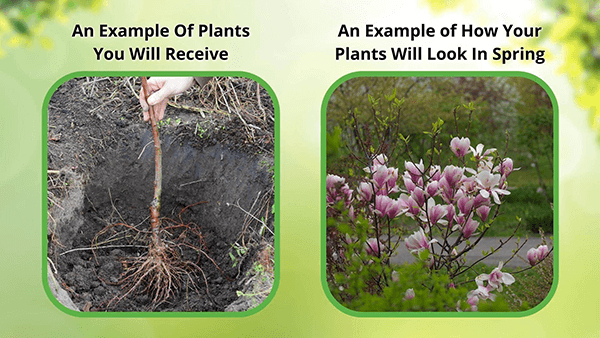



Removes & Absorbs Toxins
Improves Air Quality
Low maintenance & easy to grow
Buy Black Walnut Trees Online Wholesale
Blooming time for black walnut trees typically falls in the latter half of spring, around April or May. As the blooms develop along the branches, they trail behind the growing leaves. They resemble little cacti, and when they reach a certain length, they bend downward. Catkin, the male flower, is a cluster of little green florets, and the blooms themselves are delicate. Groups of little, greenish-yellow blooms represent the female flowers.
Attract Wildlife With Black Walnut Trees
Despite their pulpy exterior and tough shell around the kernels, the nuts that fall from this tree attract a lot of squirrels, raccoons, turkeys, and bears. These walnuts are an essential source of nutrition for many animals that hibernate because they include protein, carbohydrates, and fat. Various birds prefer these trees due to the cavities they provide for nesting. These birds range from bluebirds to wrens to chickadees and many others. Songbirds especially like these trees because more than 23 moth species use them for shelter (which the birds feast on).
Enrich Soil
This tree release a toxin called juglone into the soil. Although this chemical is present throughout the tree, it is most abundant in the roots, nut hulls, and buds. Not long after leaves fall to the ground, their juglone concentrations seep into the earth. This improved soil quality helps with weed prevention and stops the growth of other invasive plants.
Use Black Walnut Trees for Air Purification
The capacity of this tree to absorb carbon dioxide and release oxygen via photosynthesis makes them excellent air purifiers. Their thick foliage and wide canopies let them exchange gases more easily, which improves the air around them. As a bonus, this tree can absorb airborne contaminants like particulate matter and volatile organic compounds by trapping them on their leaves. This improved air quality benefits not only the trees and surrounding plants, but also the animals that use them for nesting and shelter.
This tree is fantastic for two reasons: great timber and great nuts. Its scientific name is Juglans nigra. Don't confuse it with the English walnut. It produces hard-shelled walnut fruits that are highly valued in baking. This is a very tall, deciduous tree, offering excellent shade. With the right conditions, the Black Walnut Tree gives a huge harvest and is a major investment.

This Is How Your Plants Will Look upon Delivery
Care
Deep, fertile, well-drained soil
Shipping date depends on the date displayed and chosen when you order from the product's page.
We do not offer warranties on products after 5 days past receiving your plants.
By signing up, you agree with our privacy policy.






